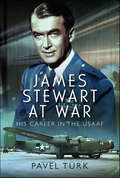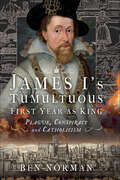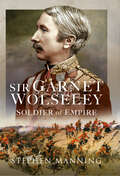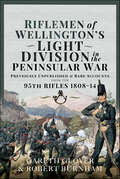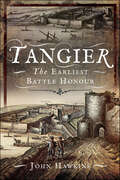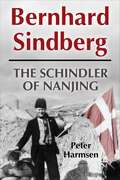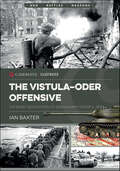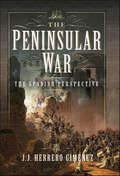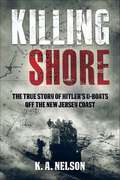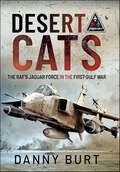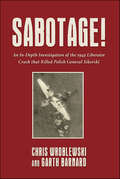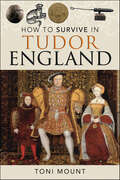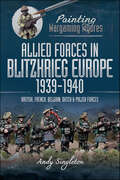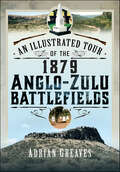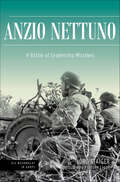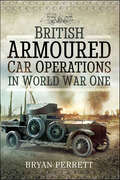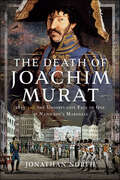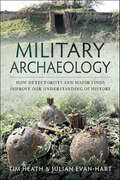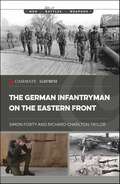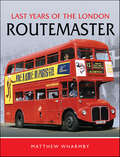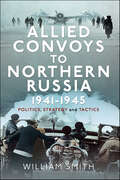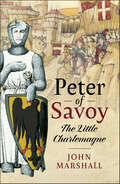- Table View
- List View
James Stewart at War: His Career in the USAAF
by Pavel TürkExplores the story of one star of the Silver Screen’s role in the Second World War James Stewart was already a Hollywood star when the United States went to war in December 1941. Having received an Academy Award for Best Actor in 1940 for his role in The Philadelphia Story, he had become a familiar face to movie goers by the time that the Japanese struck at Pearl Harbor. By that time ‘Jimmy’ had already received his private pilot’s license and when his name was drawn by the Drafting Commission on 29 October 1940, he applied to join the US Army Air Corps. He continued his pilot training and just twelve days before he received his draft, he had obtained his commercial pilot’s license. It was on 18 January 1942, that the Hollywood star was called into active duty. Jimmy was transferred to the 929th Bombardier Training School, based at Kirtland Field in New Mexico, on 19 August 1942. There he served as a pilot almost until the end of the year. Though his film company had managed to secure a ‘static personnel’ role, Jimmy was determined to fly in combat. So it was that Captain James Maitland Stewart was appointed as the Commander of the 703rd Bombardment Squadron. Finally, on 17 November 1943, he landed in the UK and his operational war began. Flying in a Consolidated B-24 Liberator, Jimmy undertook his first bombing mission on 13 December 1943, the target on this occasion being the German U-boat facilities at Kiel. Just seven days later he was once again sent to attack a target in Germany, this time the port of Bremen. A further eighteen missions followed over the following fifteen months. Stewart took part in raids against targets across Germany, including Berlin, all of which are analyzed in detail along with a fabulous collection of photographs of the aircraft Jimmy flew and the men he flew with. His contribution to victory over Germany was not confined to flying B-24 bombers, He also functioned as an Operations Officer for a period and led the Liberators of the 2nd Combat Bomb Wing to an attack on the railway marshaling yards at Halle from the navigator’s seat of a de Haviland Mosquito. James Stewart rose to the rank of major from private in just four years, an achievement few can claim. He was awarded the Distinguished Flying Cross for his actions as deputy commander of the 2nd Bombardment Wing, and the Air Medal with three oak leaf clusters. The French bestowed him with the Croix de Guerre with palm. Having risen to the rank of lieutenant colonel, James Stewart returned to the silver screen after the war. He continued to play a role in the Army Air Forces reserve, during which period he was promoted to brigadier general. In so doing, Stewart became the highest-ranking actor in American military history.
James I’s Tumultuous First Year as King: Plague, Conspiracy and Catholicism
by Ben NormanThis is the story of a crucial year in the history of England, brimming with great political and social upheaval: the year 1603. 1603 was a time of last goodbyes and new beginnings; of waning customs and fresh political and constitutional visions. It saw an aged queen die and a king from the far north rise as sovereign over a foreign nation. It also witnessed an unprecedented outbreak of bubonic plague, which began in London and spread indiscriminately through the provinces, killing up to 30,000 people. Catholicism was a second major disease doing the rounds in 1603. Its presence would lead to an attempt to dethrone King James I in the very first months of his reign, culminating in a trial staged at Winchester Castle in November. One of the candidates the conspirators had in mind to replace him was the would-be queen Lady Arbella Stuart. Indeed, Arbella would bring her own dramas to an already crowded and politically and socially charged year. The present work considers the entirety of the year 1603 in England, from January to December. In this same spirit, it also pays attention to the lives of ordinary men and women, as well as the lives of the great and powerful of the land. How aware were so-called common folk of the significant national episodes playing out around them? Did they even care? The answers are both fascinating and unexpected, and raise important questions about the interrelationship between the ordinary and the extraordinary in seventeenth-century England.
Sir Garnet Wolseley: Soldier of Empire
by Stephen ManningField Marshal Lord Wolseley was an eminent Victorian, one of a handful of late nineteenth-century military men whose reputation transcends his age. He served the British empire in Burma, India, China, the Crimea, Canada, Asante, Egypt, South Africa and the Sudan. He excelled as a regimental soldier, staff officer, army commander and reformer and eventually commander-in-chief. Yet there has been no substantial work on Wolseley for a generation and a reassessment based upon a fresh look at the man and his achievements is long overdue. That is why Stephen Manning’s perceptive military biography, which sets Wolseley firmly in the context of his period and seeks to strip away the legend that developed during his lifetime, is so timely and important. Each of Wolseley’s campaigns is examined in vivid detail and there are graphic descriptions of the major battles in which he took part, either as an officer or a general. His performance as a commander, from his great success during the expedition against the Asante to his failure to rescue Gordon from Khartoum, is critically assessed to see if he deserves his brilliant reputation. His efforts as an army reformer are examined too, in particular whether he could have done more to prepare Britain for war against the Boers. Stephen Manning’s incisive account of Wolseley’s career will be fascinating reading for anyone who is interested in the British army in the nineteenth century, in colonial warfare and in the exploits of one of Queen Victoria’s most admired generals.
Riflemen of Wellington’s Light Division in the Peninsular War: Unpublished or Rare Accounts from the 95th Rifles 1808-14
by Robert Burnham Gareth GloverNo other regiment in Wellington’s Peninsular army can compare with the 95th Rifles. Even before Bernard Cornwell’s Sharpe novels and television series, the Rifles were the most famous of all the British Army’s fighting formations. Unlike the red-coated regiments of the Line, the Riflemen were trained to act with a degree of independence, selecting their own targets in battle. As a result, a number of the officers and some of the men were more literate than their counterparts in the Line, or at least were more willing to record their experiences fighting the French. Consequently, many of the finest memoirs of the era have come from the pens of the likes of Harry Smith, Johnny Kincaid and Riflemen Harris and Costello, and have found their places on the shelves of every enthusiast of the era. However, these well-known works were written years after the fighting when memories had faded and were bulked out with incidents borrowed from others and heavily edited with grand descriptions of ‘derring-do’ for their Victorian audience, and heavily constrained by the strict morals of the day. Through many years of research, Gareth Glover has uncovered other memories written by members of the 95th which have never been published before or have not been brought to the attention of the present-day public, that were written at the time. These honestly state what really happened on the battlefields of Spain and Portugal – the suffering, the awkward incidents, the rumors and camp gossip – presenting a very different picture of life in Wellington’s army than the sanitized versions we have been presented with until now. Also included are rare or unpublished memoirs written by members of the staff of the Light Division, enabling the reader to understand the division’s command structure and organization to provide a rounded and realistic vision of this famous fighting force.
Tangier: The Earliest Battle Honour
by John HawkinsExplore Tangier's occupation through vivid characters and unravel the complexities of colonial aspirations, deceit, corruption, and international influences in this historical narrative. In 1661 Portugal ceded Tangier to Charles II as part of Catherine of Braganza’s dowry settlement. Thus started the adventure known as ‘English Tangier’ whereby the Stuart monarch spent a king’s ransom defending a city perched precariously on the North African coast surrounded by hostile powers. Woven into the historical fabric of C17th, this is a compelling narrative history bringing to life the characters that comprised English Tangier, and the greed, ambition and religious fervour which drove the political manoeuvrings, ignited the emotions and produced acts of extreme heroism in the struggle to impose British rule on an alien culture. The book describes the surreal reality of life in Tangier, the Tangier Regiment, the developing army tradition of dashing gallantry and unselfish bravery, and other regiments holding the earliest battle honor – ‘Tangier’. It also highlights the actions of those who determined the development of the town and its eventual fate. We see the results of decisions made by Charles II and his brother the Duke of York (soon to be James II), the qaids and sultans of Morocco, the Spanish Duke of Medina, Samuel Pepys and the successive governors of Tangier.
Bernhard Sindberg: The Schindler of Nanjing
by Peter Harmsen"...shows that sometimes the most unlikely of people become the most heroic." — Asian Review of Books In December 1937, the Chinese capital, Nanjing, falls and the Japanese army unleash an orgy of torture, murder, and rape. Over the course of six weeks, hundreds of thousands of civilians and prisoners of war are killed. At the very onset of the atrocities, the Danish supervisor at a cement plant just outside the city, 26-year-old Bernhard Arp Sindberg, opens the factory gates and welcomes in 10,000 Chinese civilians to safety, beyond the reach of the blood-thirsty Japanese. He becomes an Asian equivalent of Oskar Schindler, the savior of Jews in the European Holocaust. This biography follows Sindberg from his childhood in the old Viking city of Aarhus and on his first adventures as a sailor and a Foreign Legionnaire to the dramatic 104 days as a rescuer of thousands of helpless men, women, and children in the darkest hour of the Sino-Japanese War. It describes how after his remarkable achievement, he receded back into obscurity, spending decades more at sea and becoming a naturalized American citizen, before dying of old age in Los Angeles in 1983, completely unrecognized. In this respect, too, there is an obvious parallel with Schindler, who only attained posthumous fame. The book sets the record straight by providing the first complete account of Sindberg’s life in English, based on archival sources hitherto unutilized by any historian as well as interviews with surviving relatives. What emerges is the surprising tale of a person who was average in every respect but rose to the occasion when faced with unimaginable brutality, discovering an inner strength and courage that transformed him into one of the great humanitarian figures of the 20th century and an inspiration for our modern age, demonstrating that the determined actions of one person—any person—can make a huge difference.
The Vistula-Oder Offensive: The Soviet Destruction of German Army Group A, 1945
by Ian Baxter“The book is replete with maps, photographs, profiles of commanders and weapons, and illustrations that help explain the brutal combat in a region that another historian has called the ‘bloodlands’ of Europe.” — New York Journal of Books The Vistula-Oder offensive was a massive Soviet Army operation on the Eastern Front which was launched on 12 January 1945 and paved the way for the Battle of Berlin. Its main objective was a major advance from the River Vistula to the River Oder, bringing Soviet forces within fifty miles of the gates of Berlin. The offensive faced a German defensive line east of Warsaw. These 450,000 German troops were outmatched three to one by the Soviet forces. The Red Army assault began what would be a devastating three weeks for the German forces of Army Group A. German attempts to hold their lines and avoid being sucked into a maelstrom of destruction were unsuccessful. Army Group A would collapse almost all the way back to Berlin, ending the Third Reich’s desperate efforts to cling onto land captured in Poland five years earlier, and stem enemy forces spilling over into Germany and threatening Berlin. The battle saw some 295,000 soldiers killed and 147,000 captured, as well as thousands of tanks, artillery, and machine guns destroyed. Within two months of the offensive the battle of Berlin was launched. This fully illustrated book relates this story of defeat and survival, offering a detailed visual record of Nazi Germany’s demise between two main rivers in Poland and Germany.
The London Enviro 200
by David BeddallLaunched by Transbus in 2004, the original Enviro 200 mode was not a success. The Enviro 200 was relaunched in 2006, this new model becoming more successful. The new model was taken into stock by many London operators, replacing older single-deckers in their fleets. The Enviro 200 had just as much success as its predecessor, the Dennis Dart SLF. As with the Dart SLF, the Enviro 200 was available in a number of lengths. 2014 saw the launch of the Enviro 200 MMC (major model change), this replacing the original ‘classic’ Enviro 200 in 2018. The first all-electric Enviro 200 MMCs arrived in London in 2016, this becoming the standard model for new contracts. The London Enviro 200 looks at the history of the Enviro 200 and Enviro 200 MMC model in London service.
The Peninsular War: The Spanish Perspective
by JJ Herrero GiménezThe Peninsular War has been extensively studied by British historians for decades, even centuries, but the Spanish contribution to the conflict, which was fundamental to the defeat of Napoleon’s armies, has been largely relegated to minor role. This book is an attempt to rebalance our understanding of the campaign in Iberia, written by a Spanish historian and translated into English for the first time. The book does not attempt to minimize the problems the Spanish experienced nor the catastrophic defeats suffered by the Spanish Army, but the reasons for these setbacks are viewed and analyzed from the Spanish viewpoint. With the finest elements of the Spanish Army serving with the French forces in Denmark, Spain was virtually undefended when Napoleon’s armies marched into the Iberian Peninsula. New armies had to be raised virtually from scratch to fight the invader in a country where, as the Duke of Wellington remarked, small armies were beaten and large armies starved. The logistical and political difficulties faced by the Spaniards are fully explored and explained. It is the big battles, nevertheless, which receive the most attention; both the great battles such as Tudela and Ocaña and the surprising victory at Bailén, and the smaller, lesser-known combats which took place across the Peninsula. The defeats, even destruction, of their armies, did not deter the Spaniards; in fact quite the contrary. Their cities, most notably Zaragoza, defied Napoleon’s legions for months in some of the most savage fighting of any conflict as their streets were turned to rubble. Across the country, the ordinary citizens took up arms, attacking isolated French outposts and capturing enemy messengers and patrols – and the term guerrilla warfare came into being. Napoleon’s marshals had never encountered such fanaticism and Spain became a posting dreaded by the French soldiers. As the war progressed, the Spanish armies became strong enough to win several battles, contributing decisively to the defeat of Napoleon in conjunction with the magnificent achievements of Sir Arthur Wellesley and his Anglo-Portuguese army. This unique book will help the reader understand the Spanish vision of the war, dismantling some false myths and exposing the reality of a country with an indomitable spirit that never accepted the new order that Napoleon tried to impose. It is the book that has been missing from the literature of the Peninsular War for far too long.
Killing Shore: The True Story of Hitler’s U-boats Off the New Jersey Coast
by K. A. Nelson“I thought that this was going to another of those books puffing up the American side of WWII. It most certainly isn’t. K A Nelson tells an interesting story, illuminating a theatre of the North Atlantic campaign that has been comparatively neglected and he tells it well. Recommended.” -The Naval Review It is January 1942. Six weeks after the United States entered World War II, Imperial Japan is annihilating American forces across the Far East while the Nazis stand triumphant over much of Europe. Adolf Hitler’s forces are about to commence an assault along the East Coast of the United States, but this “Atlantic Pearl Harbor” would prove far more devastating than Japan’s attack on Hawaii. The wolves are closing in, and few Americans realize their beaches and coastal cities are about to witness the worst naval defeat in American history. The Western Hemisphere holds the key to victory for the beleaguered Allies, but only if the vast economic and military resources of North and South America can be carried across the Atlantic by Allied merchant ships. These civilian-manned cargo vessels are the backbone of the American war economy and the lifeline enabling Britain and the Soviet Union to survive—but Hitler’s favorite admiral also knows this, and he has set in motion a plan of unprecedented boldness. Germany’s dreaded submarines, or “U-boats,” are going to the United States. The fiery months that followed would pit American servicemen against German U-boat sailors in a desperate struggle that stained East Coast waters with oil and blood. In the crosshairs of this deadly cat-and-mouse game was a stalwart contingent of civilian mariners who crewed the tankers and freighters supplying the war against the Axis Powers. Thousands of them would perish as hundreds of merchant ships were sunk. Every American coastal state became a battlefront in 1942, and the events that transpired off New Jersey illustrate the perils and brutality of this forgotten campaign. The seafloor along the Garden State is today strewn with shipwrecks that bear witness to the innumerable ways to die faced by friend and foe alike only miles from the boardwalk. Though these seafarers’ lives were forfeit, the battle they fought would decide the fates of millions.
Desert Cats: The RAF's Jaguar Force in the First Gulf War
by Danny BurtOn 2 August 1990, Saddam Hussein’s armed forces invaded and occupied Kuwait. A swift international response followed, which, led by the United States and the United Kingdom, saw the formation of a coalition that formed the largest military alliance seen since the end of the Second World War. Among the many RAF units deployed under Operation Granby, the codename given to the British military operations during the conflict, was 41 Squadron, with elements taken from 54 Squadron and 226 OCU, which was equipped with the ubiquitous Jaguar GR1 single-seat all-weather tactical strike and ground-attack fighter. In late 1990, the squadron duly despatched a total of twelve aircraft, which soon became known for their distinctive desert pink camouflage, and twenty-two pilots from their base at RAF Coltishall. Initially conducting low-level strikes, for which the Jaguar Force had always been intended, over the weeks that followed 41 Squadron switched to more unusual medium-level missions. In total, the men and machines of 41 Squadron conducted a total of 617 sorties during Operation Granby. To complete this remarkable description of 41 Squadron’s part in the liberation of Kuwait, the author has interviewed a number of these pilots. As well as these veterans’ personal reflections, Danny Burt also explores the Jaguars’ record on air-to-ground combat and its performance in theatre, the various upgrades the type receive, and the unique nose art that each aircraft carried. Many of the pictures in this highly illustrated publication have never been published before. The story is completed by the recovery by the author of one of the Jaguar GR1s flown in the Gulf WarRescued from an Army range in South Wales, the aircraft was moved to RAF Coningsby where its restoration, including the return of its Operation Granby camouflage, is underway.
Sabotage!: An In-Depth Investigation of the 1943 Liberator Crash that Killed Polish General Sikorsky
by Chris Wroblewski Garth BarnardOn the night of 4 July 1943, transport aircraft Liberator AL523 took off from Gibraltar’s North Front tarmac and within moments crashed into the sea with only one survivor, the pilot. The commander-in-chief of the Polish army and prime minister of the Polish government-in-exile, General Władysław Sikorski, was dead. Rumours as to the cause of the crash abounded. Was it pilot error? Was it, as officially classified, merely an accident, or was it, as the authors conclude in this riveting and meticulous study, an act of sabotage? In this extensive piece of research, Chris Wroblewski and Garth Barnard examine numerous primary sources, including the complete court of inquiry transcripts, produce detailed analysis of aircraft components and systems and unearth many little-known eyewitness accounts to give this investigation a compelling conclusion. Within the book the authors also dispel several conspiracy theories that have emerged since this catastrophe; particularly that this event was a disastrous assassination attempt with blame on the British, Soviets and Nazis. This is an exhaustive piece of investigative journalism that puts the record straight once and for all.
How to Survive in Tudor England
by Toni MountEmbark on a journey to Tudor England with this self-help guide that offers engaging tips and insights for navigating the challenges of the 16th century. Imagine you were transported back in time to Tudor England and had to start a new life there, without smartphones, internet or social media. When transport means walking or, if you’re lucky, horseback, how will you know where you are or where to go? Where will you live and where will you work? What will you eat and what shall you wear? And who can you turn to if you fall ill or are mugged in the street, or God forbid if you upset the king? In a period when execution by beheading was the fate of thousands how can you keep your head in Tudor England? All these questions and many more are answered in this new guidebook for time-travellers: How to Survive in Tudor England. A handy self-help guide with tips and suggestions to make your visit to the 16th century much more fun, this lively and engaging book will help the reader deal with the new experiences they may encounter and the problems that might occur. Enjoy interviews with the celebrities of the day, and learn some new words to set the mood for your time-traveling adventure. Have an exciting visit but be sure to keep this book to hand.
Frankie Dettori's British Classic Winners
by Rupert CollensFrankie Dettori is certainly one of the late twentieth and early twenty-first centuries’ truly great international jockeys. Italian by birth – he rode his first winner there – we have been lucky in England that he came to live in Newmarket aged fifteen and has ridden mainly here. A great and popular figure, quietly and privately he has done much for disabled people. In fact, he is a good example by any standards of a superb sportsman on and off the racecourse. Perhaps most famous for riding all seven winners at Ascot on 28 September 1996, his record in the English classics over 30 years gives a true indication of his ability and dedication. There is no doubt that England’s five classic races, the 1,000 and 2,000 Guineas which both run in late April/early May at Newmarket over a mile, the Oaks and Derby which run in early June at Epsom over a mile and a half, and the St Leger which runs nearly two miles in mid-September at Doncaster, are very, very important races on the international racing scene. Frankie Dettori's record in them is super – 23 wins. Since 1945, he and Lester Piggott are the only jockeys to ride at least two winners of each of the classics. To put Frankie’s record into perspective, Sir Gordon Richards, 26-time champion flat jockey between 1925 and 1953, rode only fourteen classic winners. This highly readable but erudite book devotes a double page spread to every winning ride, and there is a color section of photographs of him aboard his winning mounts by the famous racing journalist John Crofts. Dettori's first classic winner was in the 1994 Oaks at Epsom on Balanchine and his last in 2023, once again in the Oaks, on Soul Sister. This book is a superb record of greatness in the saddle over 30 years.
Allied Forces in Blitzkrieg Europe, 1939–1940: British, French, Belgian, Dutch & Polish Forces (Painting Wargaming Figures)
by Andy SingletonProfessional figure painter Andy Singleton provides a concise guide for painting Polish, Belgian, Dutch, British and French forces. This series of hobby guides is aimed at assisting those new or unfamiliar with historical figure modeling and war gaming by providing them with a range of simple tips and techniques to assist them in putting together good looking collections using methods that won’t take an age. Beginning with an introduction to the range of tools and materials commonly found in modeling, the main part of this book comprises of concise guides for painting Polish, Belgian, Dutch, British and French forces. The step-by-step guidance covers all the common variations of uniform used during the period by the various nations, as well as tips on specialist forces such as Polish cavalry, French Colonial troops and Dutch Marines. Illustrated with hundreds of photos, each stage of the guides has a combination of text description, photograph and list of both paint and brush size used to make the steps as easy to follow as possible, as well as stunning images of the figures in period settings.
Mrs Beeton and Mrs Marshall: A Tale of Two Victorian Cooks
by Emma KayThe name Mrs Beeton has endured for well over a century, synonymous with all things reassuringly culinary, while her contemporary Agnes Bertha Marshall remains somewhat of an enigma. Both Isabella Beeton and Agnes Bertha Marshall lived within a short distance of each other in Pinner, worked in London, wrote about, and shared a passion for food, all just a couple of decades apart. While Isabella Beeton compiled one successful book of collected recipes, Agnes built a cookery empire, including a training school, the development of innovative kitchen equipment, a range of cooking ingredients, an employment agency and a successful weekly journal, as well as writing three incredibly popular recipe books. Mrs Beeton and Mrs Marshall: A Tale Of Two Victorian Cooks intrudes on the private lives of both these women, whose careers eclipsed two very different halves of the Victorian era. While there are similarities between the two, their narratives explore class and background, highlight the social and economic contrasts of the nineteenth century, the ascension of the cookery industry in general and the burgeoning power of suffragism.
An Illustrated Tour of the 1879 Anglo-Zulu Battlefields
by Adrian GreavesGreaves' work offers detailed maps and firsthand insight into the Anglo-Zulu War, providing necessary insight and overviews of the conflict's pivotal battles like Isandlwana and Rorke's Drift. In 1878 southern Africa’s two most senior figures, army commander General Lord Chelmsford and the High Commissioner Sir Henry Bartle-Frere created a false threat of a Zulu invasion of British Natal. In an astonishing act of over-confidence and without any government permission, Frere and Chelmsford invaded Zululand with five independent columns of troops. Both leaders ignored the serious implications of their two recently failed expeditions against the Zulus’ neighbouring King Sekhukhune and his Pedi people. The Zulu war lasted only six months and witnessed two separate British invasions of Zululand – one catastrophic, one successful. This book gives the reader a general overview of the Anglo-Zulu war of 1879 with descriptive text, location photographs and illuminating map overviews of the twelve main battles including Isandlwana and Rorke’s Drift. The author’s unique maps are based on his own lecture notes and ‘battlefield map handouts’ as a Zulu War battlefield guide for over 25 years. These maps were avidly collected by his many groups and other guides; they clearly explain each battlefield’s layout and sequence of events but also included many little known details of each fierce and bloody engagement. At the suggestion of the Anglo Zulu War Historical Society, these maps are now reproduced in book form. While volumes have been written on the subject, this work gives us an even better insight into these gruelling and complex battles.
Anzio Nettuno: A Battle of Leadership Mistakes
by Linden Lyons Jörg Staiger"...an excellent primer about the operations in and around the Anzio beachhead. Students of operational art, multinational operations, and amphibious warfare will find Staiger’s narrative interesting and thought-provoking." — Military Review The Allied amphibious operation codenamed Shingle was launched in late January 1944. It was opposed by German forces in the area of Anzio and Nettuno. Success depended on the element of surprise, and the speed with which the invaders could build up strength and move inland. This was understood by General Mark Clark, commander of the US Fifth Army, but not fully understood by his subordinate commanders. This German account focuses on the landing at Anzio as it was the only one that failed to achieve its objective of smashing the German defense and achieving operational freedom of movement. The battle lasted over six weeks, with mistakes made by leadership on both sides, and consequently also great sacrifice by soldiers on both sides. But the operation was not a German success either, and attempts to prevent the creation of a strong bridgehead failed. Ultimately the Allies would reach Rome, and the Allies applied lessons from this battle to facilitate the success of Overlord, launched five months later. While not complete, as the author did not have access to some of the war diaries of higher levels of German command, this is still one of the best German accounts of Operation Shingle and is here translated into English for the first time.
British Armoured Car Operations in World War One
by Bryan PerrettReaders have come to expect a level of detail and critical rigour from the established military historian and author Bryan Perrett. They will not be disappointed at all here by this new publication. Focussing predominantly on the British armoured car units of World War One, it also untangles many fascinating strands forming the history of modern warfare. Full of detail, it acquaints the reader with the complete history of the armoured car, from invention onwards, setting the history of its Great War service career firmly in context. Well written in an accessible style, this publication serves as an impressive tribute to the armoured car, one of the most effective weapons utilised by the allies during the course of the Great War.
The Death of Joachim Murat: 1815 and the Unfortunate Fate of One of Napoleon's Marshals
by Jonathan NorthThe only English-language book on the fall and death of Joachim Murat and the final act in the drama of the Napoleonic Wars. Joachim Murat, son of an innkeeper, had won his spurs as Napoleon’s finest cavalry general and then won his throne when, in 1808, Napoleon appointed him king of Naples. He loyally ran this strategic Italian kingdom with his wife, Napoleon’s sister Caroline, until, in 1814, with Napoleon beaten and in retreat towards ruin and exile, the royal couple chose to betray their imperial relation and dramatically switched sides. This notorious betrayal won them temporary respite, but just a year later Murat engineered his own dramatic fall. A series of blunders took the cavalier king from thinking he had secured his dynasty to fleeing his kingdom. His native France did not welcome him, initially because Napoleon had not forgiven him, then, after Napoleon’s fall following Waterloo, because the restored Bourbons were offering a reward for Murat’s head. Fleeing again, fate brought him to Corsica where, welcomed at last, Murat turned to plotting the reversal in his fortunes he so felt he deserved. Murat soon resolved to bet everything on a hare-brained plan to return to Naples as a conquering hero and king. His aim was to take a small band of followers, land near his capital, organise regime change and reclaim his throne. In September 1815, he set off and what happened next forms the core of this part-tragic, part-ridiculous story and a lesson in how not to stage a coup. Just five days after landing in Calabria, King Joachim was hauled before a firing squad and executed. There is a fine line in history between a fool and a hero. Had Murat succeeded then he would be lauded as daringly heroic but, alas, he failed, and his final adventure has been consigned to oblivion. This is unfortunate as the fall of Joachim Murat is the final act of the Napoleonic Wars in Europe as well as being a dramatic story in its own right. Based on research in the archives of Paris and Naples, Jonathan North’s book aims to throw light on the fate of the mightily fallen Murat and restore some history to a tale that, until now, lay smothered under two centuries of fable and neglect.
Military Archaeology: How Detectorists and Major Finds Improve our Understanding of History
by Tim Heath Julian Evan-HartA valuable addition to the military and literary analysis of the archaeology of warfare from the Boudiccan uprising to the 2003 Invasion of Iraq. Military and battlefield archaeology has always been viewed as a sub-discipline to that of traditional historical archaeology. Once considered the pursuit of learned history professors and their disciples today, military archaeology has flourished around the world into what can only best be described as a hugely popular pastime, and in some instances a multi-million-pound business. With technologies available today, even the student on the most modest of budgets can become an archaeologist (if only in the layman’s term). Yet despite it’s popularity in unearthing answers to the questions of our turbulent past, there are surprisingly few texts available on what is arguably a fascinating and historically important subject. The objective herein is to present an analysis of various battles fought around the world from medieval times to the present, and the archaeology recovered from investigations carried out by professionally sanctioned groups and hobbyists. The context here includes general battlefield recovered artifacts, military aviation crash sites, Second World War pill boxes, air raid shelters, POW Camps and other structures. There is also emphasis on Britain’s ally in both world wars, the United States of America, examining the artifacts, wreckology, structures and dumping grounds left behind by the American military forces at the end of the Second World War both in the UK and Europe. Military Archaeology: How Detectorists and Major Finds Improve our Understanding of History is a valuable addition to the military and literary analysis of the archaeology of warfare from the Boudiccan uprising to the 2003 Invasion of Iraq.
The German Infantryman on the Eastern Front
by Simon FortyA fully illustrated survey of the German infantryman on the Eastern Front in World War II. The German Army was all-conquering until late 1941 when, only a few miles short of Moscow, it ran out of steam. Maniacal defense, the Russian winter and exhaustion all played their part and, although they didn’t realize it, the German forces wouldn’t advance further on this front. While they continued their offensives into 1942, Soviet defenses had stiffened. Its equipment – notably the T-34 – had improved and the Germans had lost too many of their best men: the savvy NCOs and experienced junior officers that gave the Wehrmacht its edge over the opposition. They had lost their moral compass as well. Complicity in the massacres of the SS-Einsatzgruppen, the barbarity of the anti-Partisan operations and summary execution for those who flagged, were the hallmarks of the German Army’s fight for survival against people it considered less than human. Outnumbered, under attack on many other fronts, their homeland bombarded unceasingly from the air, the German servicemen endured the hell of the Eastern Front until their armies were destroyed in 1945. While the morality of the regime they fought for and its reprehensible actions should never be forgotten, what cannot be denied is the indefatigable courage of the German infantrymen. Fully illustrated with over 150 contemporary photographs and illustrations – and exploring a broad range of topics from uniform, weapons and provisions to tactics and communications – this title provides valuable insights into the Germans’ main theater of operations in World War II.
Last Years of the London Routemaster
by Matthew WharmbyThe last decade of Routemaster bus operation in London saw over seven hundred surviving RMs and RMLs divided between several new companies following the privatization of London Buses Ltd’s subsidiaries in 1994. Now operating their existing twenty routes under contract to LRT (renamed TfL in 2000), Centrewest, Metroline, MTL London Northern, Leaside Buses, Stagecoach East London, South London, London Central, London General and London United all adopted their own predominantly red liveries, but by the turn of the century these firms had clustered in pairs and generally sold out to the emerging big corporate groups. Two independents, BTS and Kentish Bus, had also won a Routemaster route each and were similarly brought under the control of larger parents. In this photographic archive, each company’s last Routemaster-operating decade is outlined in detail up to when each route was converted to OPO one by one between 29 August 2003 and 9 December 2005. The two heritage routes are then explored all the way up to their own end in 2019.
Allied Convoys to Northern Russia, 1941–1945: Politics, Strategy and Tactics
by William SmithA carefully researched work providing an overview of the strategic factors dominating the costly yet war-winning Arctic convoy program. While the experiences of the men and ships who sailed in the Allied convoys to North Russia between August 1941 and May 1945 have been fully documented, the wider political, diplomatic and military factors which determined the campaign are less well known. The principal actors Roosevelt, Churchill and Stalin each had their own agendas and expectations, influenced by advisers and competing national priorities. These inevitably gave rise to differences putting pressure in turn on the convoy program while the varying effectiveness of German counter-action was a significant and unpredictable factor. 1942 was dominated by pressure on Churchill from Roosevelt and Stalin to increase the size of convoys at a time when the Royal Navy lacked the necessary escorts. This deficiency was exacerbated by heavy merchant shipping losses and the demands of Operation TORCH. The temporary convoy suspension in 1943 followed the deployment of German heavy warships to Norway and the diversion of escorts to Operation HUSKY. A serious Anglo-Soviet rift, which led to Allied threats to discontinue the program, was only resolved by lengthy negotiations. It resumed until temporarily suspended due to the D-Day landings after which the increasing escort availability allowed operations to run uninterrupted until May 1945. This carefully researched work providing an overview of the strategic factors dominating the costly yet war-winning Arctic convoy program will be welcomed by experts and laymen alike.
Peter of Savoy: The Little Charlemagne
by John MarshallWhere did the story that ended with the great Edwardian castles of north Wales begin? How was it that hundreds of men from Savoy built castles in north Wales? Whose stylised statue sits outside the Savoy Hotel in London on the site of his former palace? Whose castle of Pevensey endured successfully the longest English siege? Why does much of Switzerland speak French to this day? Why do we find elements of the Magna Carta in the Statutes of Savoy? Who was one of the greatest figures of the thirteenth century? Peter of Savoy, known to chroniclers of his homeland as The Little Charlemagne. Peter of Savoy came to England as the uncle of Queen Alianor de Provence, the consort of King Henry III. He quickly found favour as one of Henry’s closest advisers and noblemen. Peter was in effect Queen Alianor’s right-hand man in England, her protector, and subsequently the protector of Lord Edward, the future King Edward I. He played a key role in Henry’s military and diplomatic efforts to recover his ancestral lands in France which culminated in the 1259 Treaty of Paris. This rapprochement between the Capetians and Plantagenets might have warded off the Hundred Years War, but it was not to be. Nonetheless, the nineteenth-century monks of Savoy thought it his greatest accomplishment. Peter played a key role in the Second Baronial War which engulfed Henry’s reign, at first siding with Simon de Montfort but then changing sides as the reform movement veered toward xenophobia. Returning to Savoy he laid the foundations for the County of Savoy to become a powerful Duchy which in turn almost became a country before it was dismembered by Switzerland, Italy and France. His historical reputation suffered at the hands of English chroniclers keen to eulogise the Montfortian regime. This work is an attempt to discover the real Peter of Savoy.
